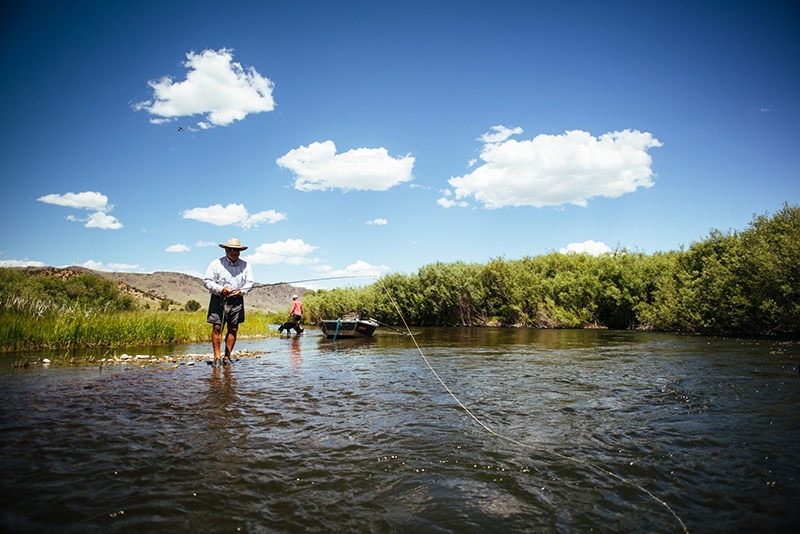Approved 9/30/16
Protect
- Wild and native trout, salmon, and steelhead stream habitat, riparian zones, and their watersheds
- Native trout, wild trout, & salmon and their watersheds:
- Through existing and new federal and administrative land designations
- From the impacts of climate change
- From pollution from energy development, mining, agricultural run-off, acid deposition, and other sources
- Against invasive species including inappropriate stocking of hatchery salmonids
- Against trans-basin diversions
- Outstanding trout waters, both freestone streams and tailwaters, on public and private lands
- Coldwater aquifers/groundwater
Reconnect
- Headwater tributaries to mainstreams on public and private lands
- Salmonid habitats
- By removing small-scale dams, culverts and obstructions (e.g., velocity barriers) that impede natural and historic migrations
- With increased streamflow and secured streamflow through stronger leases and acquisition authorities
- Through large-scale dam removal and restoration with Federal support in targeted basins
Restore
- Native and wild trout populations, including increasing their resiliency to environmental and man-made stressors
- Atlantic and Pacific salmon to their historic range
- Riparian habitat, instream flows & water quality
- Water quality and quantity through improvement of the interconnected relationship of groundwater and surface water
Sustain
- Trout and salmon fisheries through land conservancy
- Education and membership development
- Membership growth, particularly through diversity (e.g., women, youth, minorities) and programs (e.g., Veteran’s Service Program) so as to create and promote a culture of inclusivity
- Stronger chapters and councils through an increase in the number of active participants
- The TU brand through effective image and brand marketing
- Chapter and council project effectiveness through an increase in the use of Angler Science programs as presented by the TU Science Team
- Chapter and council activities through such mechanisms as EAS grants, including ensuring sustainable funding for the EAS program
The above agenda items will be accomplished through the means and Strategic Opportunities outlined in our 2015-2020 TU National Strategic Plan, such as Angler Science, Flood Resiliency and Response, STREAM – Science, Technology, Recreation, Engineering, Arts, and Math, and as summarized below:
Conservation
Prioritize specific projects/programs by region (e.g., Wild Steelhead, SW Native Trout, Eastern Brook Trout, Tailwaters)
Engagement
- Build volunteer capacity & participation through stronger chapters and councils
- Invest in youth (e.g., STREAM)
- Partnering with NGOs, local, state, and federal agencies and governments, and public/private entities to increase TU’s conservation efforts
- Improve member acquisition and diversity (e.g., women, youth, minorities, VSP, etc.)
Communications & marketing
- Promote the revised TU brand and logo
- Improve public awareness and support
- Continue to improve communications systems
- Participate in advocacy & lobbying campaigns and/or efforts
Funding
- Articulate compelling needs and goals for funding (e.g., targeted campaigns, EAS, etc.)
- Utilize the emotional hook for “friendraising” efforts that precede successful fundraising
- Seek Federal resources for targeted basins to conduct large scale dam removal and restoration
Critical Focus Areas of the National Conservation Agenda
- Pebble Mine
- Yellowstone National Park native fish conservation
- Gas & oil development including, but not limited to, withdrawal, distribution, sand mining, and waste management.
- Clean Water Act
- Good Samaritan fix via legislation or administration
- Hard rock mining issues
- Climate Change
- Trout Unlimited Capacity


